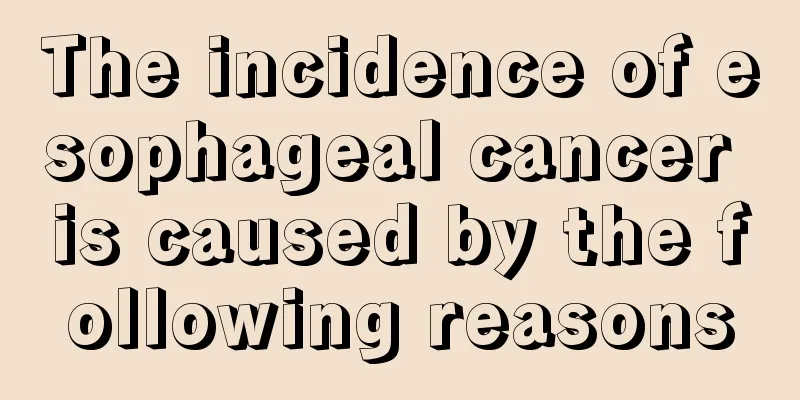What are the early symptoms of nasopharyngeal carcinoma? What is the prognosis of nasopharyngeal carcinoma?

|
What are the early symptoms of nasopharyngeal carcinoma? What is the prognosis of nasopharyngeal carcinoma? The early symptoms of nasopharyngeal cancer are not obvious, so they are easily ignored by patients and doctors. These symptoms include nosebleeds, runny nose, nasal congestion or Eustachian tube occlusion that blocks hearing. Bleeding rarely occurs in the early stages, and later symptoms include overlapping images, facial pain and headaches. Since the nasopharynx has a strong lymphatic drainage duct leading to the neck, the first symptom of the spread of nasopharyngeal cancer may be swollen lymph nodes. Patients who seek medical attention immediately at this stage may have a chance of cure. If the cancer cells become too large or spread to the lungs, liver and bones, the possibility of cure is much smaller. The early symptoms of nasopharyngeal carcinoma are not obvious and it is difficult to detect. 80% of patients are already in the late stage when they are discovered. Serological examinations can help to detect nasopharyngeal carcinoma early. After radiotherapy, the five-year survival rate of stage I patients is over 90%. The prognosis of nasopharyngeal carcinoma is related to the following three factors: 1. Racial differences There are obvious racial differences in the incidence and prognosis of nasopharyngeal carcinoma. It is more common in the yellow race and less common in the white race. The severity and prognosis of nasopharyngeal carcinoma in the yellow race are worse than those in the white race. 2. Treatment methods The choice of treatment method directly affects the survival rate of nasopharyngeal carcinoma. Currently, the best way to treat nasopharyngeal carcinoma is radiotherapy. However, many nasopharyngeal carcinoma patients cannot bear the side effects of radiotherapy and give up during the treatment process. Although radiotherapy technology is constantly improving and perfecting, it is still impossible to completely eliminate side effects. Other treatment methods are needed to enhance the patient's tolerance. 3. Early detection The 5-year survival rate of nasopharyngeal carcinoma patients who are detected and treated early is four times that of those detected in the late stage. Early detection, early diagnosis and early treatment are important parts of nasopharyngeal carcinoma prevention and treatment. However, the early diagnosis rate of nasopharyngeal carcinoma is still not ideal. According to incomplete statistics, less than 1/2 of nasopharyngeal carcinoma patients found in outpatient clinics have early nasopharyngeal carcinoma. |
<<: Can cancer screening detect nasopharyngeal cancer?
>>: What is the identification method for nasopharyngeal carcinoma and how to identify it
Recommend
Can lymphoma be cured in its early stages? How to care for it?
Lymphoma is an immune system disease. Generally s...
Understanding postoperative care for prostate tumors
Postoperative care for prostate tumors is very im...
A brief discussion on the treatment of prostate cancer
In recent years, prostate cancer has become a maj...
Is gonococcus serious?
Neisseria gonorrhoeae is the causative agent of g...
What are the main causes of brain cancer?
Among the many brain diseases, brain cancer is on...
Why is urine yellow for a long time?
If urine turns yellow for a long time, it will be...
Why do you need to shave your hair during surgery
Surgery is a very important process. Patients sta...
Is ear congestion after radiotherapy for nasopharyngeal carcinoma a recurrence?
The incidence of nasopharyngeal cancer has gradua...
Basic principles of radical gastrectomy for gastric cancer
The basic principles of radical gastrectomy for g...
Urea Mycoplasma positive
Many people are not particularly aware of the pos...
How to prevent and maintain bile duct cancer
How to prevent and maintain bile duct cancer? Alt...
How to improve IQ and thinking ability?
Thinking and IQ are basic abilities of people. In...
A layer of white stuff grows on the scalp
If there is white stuff on the scalp, it is likel...
I got a rabies vaccine while I was pregnant
After a woman becomes pregnant, her body often un...
What is the relationship between shoulder pain and liver cancer? Why is shoulder pain a symptom of liver cancer?
Shoulder pain is very common in life. Many people...









